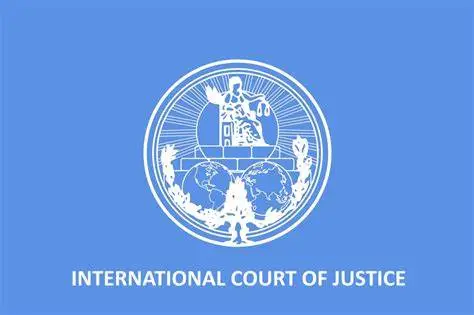Zafar Iqbal
The History of International Court of Justice:
The outbreak of World War II in 1939 had a devastating impact on the Permanent Court of International Justice (PCIJ), which had already been experiencing a decline in its activity. The PCIJ held its last public sitting on December 4, 1939, and its last order on February 26, 1940. No further judicial business was conducted, and no elections of judges were held. In 1940, the PCIJ relocated to Geneva, leaving one judge in The Hague together with a few Dutch Registry officials.
Despite the war, there was still a need to consider the future of the PCIJ and the creation of a new international political order. In 1942, the United States Secretary of State and the British Foreign Secretary declared their support for the establishment or re-establishment of an international court after the war. The Inter-American Juridical Committee also recommended that the PCIJ’s jurisdiction be extended.
Early in 1943, the United Kingdom Government invited a number of experts to London to form an informal Inter-Allied Committee to examine the matter. The Committee, chaired by Sir William Malkin of the United Kingdom, held 19 meetings, which were attended by jurists from 11 countries. In its report, published on February 10, 1944, the Committee recommended that:
- The Statute of any new international court should be based on that of the PCIJ.
- The new court should retain an advisory jurisdiction.
- Acceptance of the jurisdiction of the new court should not be compulsory.
- The court should have no jurisdiction to deal with essentially political matters.
Meanwhile, on October 30, 1943, following a conference, China, the USSR, the United Kingdom, and the United States issued a joint declaration recognizing the need to establish “at the earliest practicable date a general international organization, based on the principle of the sovereign equality of all peace-loving States, and open to membership by all such States, large and small, for the maintenance of international peace and security.”
This declaration laid the groundwork for the creation of the United Nations, and the International Court of Justice (ICJ) was established as the principal judicial organ of the UN when the UN Charter came into force in 1945.
After World War II, the four major powers (China, the USSR, the United Kingdom, and the United States) met in Dumbarton Oaks and Washington to discuss the creation of a new international organization, including an international court of justice.
A committee of jurists from 44 countries was then tasked with drafting a statute for the new court. This statute was based on the statute of the Permanent Court of International Justice (PCIJ), but it also included some new features, such as the provision that all UN member states would automatically be parties to the statute.
The San Francisco Conference, which was held in 1945 to draw up the UN Charter, decided against compulsory jurisdiction for the new court and in favor of creating a completely new court that would be a principal organ of the UN.
There were several reasons for this decision. First, the PCIJ was associated with the League of Nations, which was about to be dissolved. Second, the UN Charter stated that all UN member states would automatically be parties to the statute of the new court, which was not the case for the PCIJ. Third, several states that were parties to the statute of the PCIJ were not represented at the San Francisco Conference, and vice versa. Fourth, some people felt that the PCIJ was part of an older order in which European states dominated the international community, and that the creation of a new court would make it easier for states outside of Europe to play a more influential role.
The new court, which was named the International Court of Justice (ICJ), was established as the principal judicial organ of the UN when the UN Charter came into force in 1945.
Even though the San Francisco Conference decided to create a new international court, it was considered important to maintain some continuity with the Permanent Court of International Justice (PCIJ). This was because the PCIJ’s statute was based on past experience and had proven to be effective.
The UN Charter therefore explicitly states that the statute of the International Court of Justice is based on the statute of the PCIJ. Additionally, steps were taken to transfer as much of the PCIJ’s jurisdiction as possible to the new court.
However, the decision to create a new court necessarily meant that the PCIJ would be dissolved. The PCIJ held its final meeting in October 1945 and decided to transfer its archives and assets to the new International Court of Justice, which would also be headquartered at the Peace Palace.
All of the judges of the PCIJ resigned on January 31, 1946, and the first members of the International Court of Justice were elected on February 6, 1946, at the first session of the UN General Assembly and Security Council.
In April 1946, the PCIJ was officially dissolved, and the International Court of Justice held its first meeting. At this meeting, Judge José Gustavo Guerrero (El Salvador), the last president of the PCIJ, was elected as the first president of the new court.
The court then appointed the members of its registry, many of whom were former officials of the PCIJ. The International Court of Justice held its inaugural public sitting on April 18, 1946, and the first case was submitted to it in May 1947. This case, which was brought by the United Kingdom against Albania, concerned incidents in the Corfu Channel.
Critical Appraisal of Internation Court of Justice:
The International Court of Justice (ICJ) has been the principal judicial organ of the United Nations since its establishment in 1945. It has played a significant role in the development of international law and in the resolution of international disputes. However, the ICJ has also been criticized for its slow pace of work, its lack of compulsory jurisdiction, and its limited enforcement powers.
One of the main criticisms of the ICJ is that it is too slow. Cases can take many years to be resolved, which can be frustrating for the parties involved. This is due to a number of factors, including the ICJ’s complex procedures, the need for judges to translate documents into multiple languages, and the fact that the ICJ has only 15 judges who must deal with a large caseload.
Another criticism of the ICJ is that it does not have compulsory jurisdiction. This means that states are not required to submit their disputes to the ICJ for adjudication. This has limited the ICJ’s ability to resolve some of the most important international disputes.
Finally, the ICJ has also been criticized for its limited enforcement powers. The ICJ can only issue advisory opinions and binding judgments. It has no power to enforce its judgments on its own. This means that states are not legally obligated to comply with the ICJ’s judgments.
Despite these criticisms, the ICJ has made a number of important contributions to the development of international law and to the resolution of international disputes. For example, the ICJ has issued judgments on a wide range of topics, including territorial disputes, maritime boundaries, human rights, and environmental protection. These judgments have helped to clarify the law and to provide guidance to states in resolving their disputes.
The ICJ has also played an important role in promoting peace and security. For example, the ICJ has issued judgments on the use of force, the legality of nuclear weapons, and the rights of minorities. These judgments have helped to deter states from resorting to violence and to promote respect for human rights.
Overall, the ICJ has a mixed record. It has made important contributions to the development of international law and to the resolution of international disputes. However, it has also been criticized for its slow pace of work, its lack of compulsory jurisdiction, and its limited enforcement powers.
Here are some specific examples of the ICJ’s performance:
- In the Corfu Channel case (1949), the ICJ ruled that Albania had violated the United Kingdom’s right of innocent passage through the Corfu Channel. This judgment helped to clarify the law on the right of innocent passage and to deter states from interfering with ships passing through their territorial waters.
- In the South West Africa case (1966), the ICJ ruled that South Africa’s continued administration of South West Africa was illegal. This judgment helped to put pressure on South Africa to withdraw from South West Africa and to pave the way for the country’s independence.
- In the Nicaragua case (1986), the ICJ ruled that the United States’ support for the Contras in Nicaragua was illegal. This judgment helped to clarify the law on the use of force and the prohibition of intervention in the internal affairs of other states.
- In the Genocide case (1993), the ICJ ruled that Serbia was responsible for genocide in Bosnia and Herzegovina. This judgment was an important step in holding Serbia accountable for its actions and in promoting justice for the victims of genocide.
The ICJ has also issued judgments on a number of other important cases, including the Lockerbie case, the Gabčíkovo-Nagymaros Project case, and the Whaling in the Antarctic case. These judgments have helped to develop international law and to resolve international disputes in a peaceful manner.
Overall, the ICJ has played a significant role in the development of international law and in the resolution of international disputes. However, it is important to note that the ICJ has its limitations. It is a slow-moving court, it does not have compulsory jurisdiction, and it has limited enforcement powers. Nevertheless, the ICJ remains an important institution for the promotion of international peace and security.
Please, subscribe to the YouTube channel of republicpoicy.com














